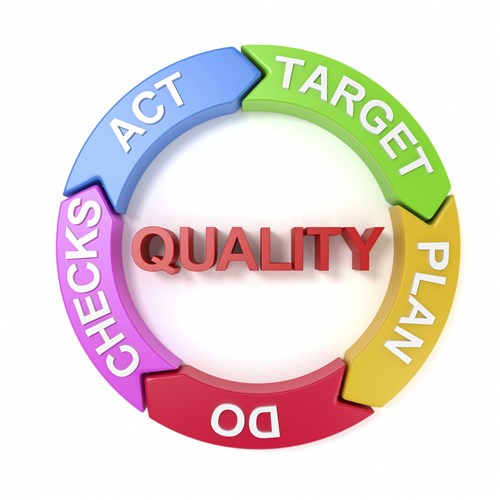
A5. Variability, Inadequacy, and Strategies for Reduction
- Dates
- from 16/03/2025 to 17/04/2026
- Credits
- 6 ECTS
- More information
- Neus Gabà
ngaba@fadq.org
+34 93 207 66 08
Objectives
- Understand the importance of practice variability, its historical precedents, its causes, strategies to reduce it, and international experiences.
- Analyze the basic aspects of evidence-based medicine and its application through clinical practice guidelines, protocols, and clinical pathways.
- Apply tools for searching scientific evidence and publishing experiences and quality improvement initiatives.
- Explain the application of Lean Management.
- Understand and discuss the importance of efficiency as a dimension of quality.
- Introduce and develop economic evaluation methods in healthcare: cost-effectiveness analysis, cost-utility analysis, cost-benefit analysis, and cost-consequence analysis.
- Assess and analyze the influence of costs on healthcare decision-making.
- Understand and critically evaluate cost studies and healthcare quality.
- Understand the organizational approach to achieving and rewarding value-based care.
- Analyze and discuss value-based healthcare service delivery according to Michael E. Porter.
- Describe the characteristics of integrated care, its models, evaluation, and outcomes.
Didactic Units:
- Introduction to clinical variability: key concepts
- Summary of main variability studies
- Causes of unwarranted variability and how to address it
- Evidence of overuse.
- Avoiding overuse.
- Drivers to address medical underuse and overuse and achieve high-value healthcare services.
- RAND/UCLA methodology.
- Healthcare service underuse.
- Definitions of efficiency.
- Common approaches to measuring efficiency: cost per episode, cost per discharge, cost per covered person, cost per health improvement, productivity.
- Hospital efficiency.
- Professional efficiency.
- Health plan efficiency.
- Efficiency measures.
- Payment methods and healthcare quality.
- General principles of LEAN methodology.
- LEAN tools.
- 5S Application.
- Health Economics and Economic Evaluation
- Types of Economic Evaluation
- Cost-effectiveness Analysis
- Cost-utility Analysis
- Cost-benefit Analysis
- Cost-consequence Analysis
- Quality-Adjusted Life Years (QALYs)
- Healthy Years Equivalent (HYE)
- Disability-Adjusted Life Years (DALYs)
- Steps for Developing Guidelines.
- Steps for Developing Protocols.
- Design of Evidence-Based Tools.
- Critical Analysis of Clinical Practice Guidelines with Agree.
- Application of These Instruments in Clinical Practice.
- Presentation and Discussion of Theoretical Foundations of Scientific Information Search on the Internet
- Introduction to Concepts and Methods Defining the Process of Filtering and Critical Reading of Scientific Information
- Practical Approach to Searching and Filtering Scientific Evidence Online and Discussing the Results
- Describe the Guidelines and Their Formal Aspects for Publishing and Presenting Research Articles in Health Services
- Structuring a Publication in the Field of Quality Based on the SQUIRE Guidelines
- Integrated Care: Concept and Dimensions
- Integrated Care: Individual Models
- Integrated Care: Group-Centered Models
- Integrated Care: Population-Based Models
- Integrated Care: Evaluation and Results